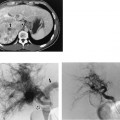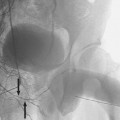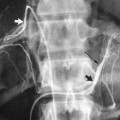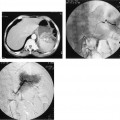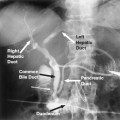4
An Approach to Sedation and Monitoring
As the complexity and duration of diagnostic vascular and interventional procedures have increased, it has become more important to provide adequate comfort for the patient. Interventional radiologists must consider that patients are anxious about the procedure, will be in a supine position on a hard and generally uncomfortable procedure table, and are usually in a cold environment. Interventional radiologists also must address the pain or possibility of pain during the procedure. Monitoring the patient during the procedure, especially if conscious sedation is administered, and monitoring during recovery are essential. Patients must refrain from moving for much of the procedure, and cooperate in specific breath-holding maneuvers during some manipulations and during most image acquisitions. Thus, the role of sedation and monitoring is key.
Personnel attending to patients undergoing interventional procedures should have sufficient knowledge of the pharmacology, indications, and contraindications for relevant sedative agents and the ability to recognize and initiate treatment for any adverse reaction to those agents as well as have basic skills in emergency airway management and resuscitation. In addition to the supervising physician, the team should include a health professional whose primary job is monitoring the patient and who is available to the patient during the procedure and post-procedure recovery phase, until the patient has been transferred to appropriate recovery room personnel.1
Intravenous conscious sedation is a minimally depressed level of consciousness induced by the administration of pharmacologic agents, in which the patient retains conscious and independent ability to maintain a patent airway and to respond to physical and or verbal stimulation. Deep sedation is a controlled state of depressed consciousness or unconsciousness from which the patient is not easily aroused; it is accompanied by a partial or complete loss of protective reflexes, including the ability to maintain a patent airway independently and loss of appropriate response to physical stimulation or verbal command. During conscious sedation, a patient may start out anxious or agitated but will become tranquil, cooperative, and oriented; during the deepest level of conscious sedation, the patient may be somnolent, responding to commands only. When the patient enters a state of deep sedation, the patient may respond only to loud auditory stimuli or may exhibit sluggish or absent response to a loud stimulus or glabellar tap. Deep sedation is monitored under the care of an anesthesia, rather than a procedural, team.2 General anesthesia is a controlled state of unconsciousness in which there is a loss of protective reflexes, including the ability to maintain a patent airway independently and to respond appropriately to physical stimulation or verbal command.
Before intravenous conscious sedation is instituted, a pertinent history and physical examination must be performed or they must be available from the day of the procedure. A specific allergic history is also necessary. An assessment of baseline vital signs, level of consciousness, motor function, electrocardiogram (ECG) and oximetry also should be done. In children, weight is needed to determine dose determination. During conscious sedation, intravenous access must be continually maintained. Monitoring of physiologic measurements should be performed and recorded at least every 15 minutes during the procedure and into the recovery phase. Physiologic parameters to be measured include level of consciousness, respiratory function, oximetry, blood pressure, and heart rate and rhythm. Supplemental oxygen and suction must be immediately available and a defibrillator with a crash cart that has backup emergency power also should be available immediately. These general principles apply to adults. Requirements for pediatric sedation and analgesia in children are somewhat more specific.3
 Pharmacologic Agents
Pharmacologic Agents
Widely used agents for anxiety in the interventional suite include the benzodiazepines midazolam (Versed) and diazepam (Valium). Lorazepam (Ativan) is another benzodiazepine that can be used for sedation. Like most other agents, benzodiazepines are usually administered intravenously. These anxiolytic agents are important components of intraprocedural sedation, but they can be used as the initial premedication soon after the patient has arrived in the angiography suite and consent has been obtained. Benzodiazepines provide anxiolysis and amnesia and have anticonvulsant properties; they are also reversible. These agents can cause respiratory depression and hypotension, and may interact with administered opioids (Table 4-1).
For analgesia, three commonly used opioids are morphine, meperidine (Demerol), and fentanyl. Opioids provide analgesia and sedation; they are reversible, but they may cause respiratory depression, nausea, and hypotension. Benzodiazepines and opioids may interact. Additional agents that may be useful include droperidol, a major tranquilizer that supplements sedation and produces a calm appearance, but is not administered as a sole agent. Droperidol is useful for the prevention and treatment of nausea. Ketamine, administered intravenously over 2 to 3 minutes, may be used for additional analgesia. Ketamine may cause hallucinations and is generally given after benzodiazepines are first administered and the patient is reassured. Ketamine is a powerful analgesic that can be used in painful procedures such as percutaneous biliary drainage.
Stay updated, free articles. Join our Telegram channel

Full access? Get Clinical Tree



